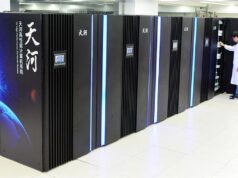In the shimmering, paranoid corridors of the digital multiverse—somewhere between a simulated strawberry and the face of your dog rendered as a probability map—AlexNet lives again.
On an otherwise unremarkable Thursday, Google and the Computer History Museum (CHM) flung open the dusty vault and uploaded a ghost: the original source code of AlexNet, the neural network that taught machines to see. It’s now open-source and available on GitHub for anyone brave—or foolish—enough to stare into the algorithmic void.
This isn’t just software. It’s a Rosetta Stone of the Machine Age. It’s the code that cracked open the skull of AI and let the dreams spill out.
Origin Story: Born of Pixels and Panic
AlexNet didn’t arrive with fireworks. It arrived with pixels, patterns, and late-night code runs in a Canadian bedroom. In 2012, three University of Toronto researchers—Alex Krizhevsky, Ilya Sutskever, and their advisor Geoffrey Hinton—entered the ImageNet competition, where AI models tried to recognize objects in photographs.
Their weapon: a deep convolutional neural network trained on millions of images using GPUs in Alex’s room. Their victory wasn’t marginal—it was annihilation. AlexNet crushed the competition, misclassifying just 15% of images where others floundered above 25%.
Suddenly, machines could distinguish a strawberry from a school bus. The future was blinking into consciousness.
The Vision Revolution
Before AlexNet, AI models were glorified rulebooks. Engineers had to handcraft every pattern recognition strategy—like describing a banana to someone over the phone. AlexNet didn’t ask for instructions. It built its own understanding through layers: from edges and textures to paws and whiskers. It was the first to really see.
The project combined three separate realities:
- Deep neural networks: stacked layers of artificial neurons mimicking synaptic growth.
- Massive image datasets: millions of labeled pictures curated by humans on Amazon’s Mechanical Turk.
- GPU acceleration: using gaming hardware (Nvidia’s CUDA-capable chips) to simulate thought at scale.
This trinity became the blueprint for modern AI—from speech recognition to synthetic art to large language models like ChatGPT. That singular 2012 moment was the pivot from cold computation to something bordering consciousness.
Yann LeCun—now a legend himself—stood up at the Florence conference where AlexNet debuted and declared it “an unequivocal turning point.” And then everything started to change.
The Ripple Effect: Machines Begin to Dream
AlexNet was more than a technical achievement. It was the opening of a portal. Within years:
- Self-driving cars began navigating our streets.
- Siri and Alexa stopped sounding like bad improv actors.
- Art, poetry, and even empathy started seeping from the circuits.
But with it came monsters.
AlexNet’s descendants helped create deepfakes, powered mass surveillance, and flooded our networks with synthetic humans. Algorithms now curate reality. Truth became a statistical outlier.
Philip K. Dick might’ve warned us: “Reality is that which, when you stop believing in it, doesn’t go away.” AlexNet taught machines to simulate reality so well we stopped noticing the seams.
Resurrecting the Artifact
The Computer History Museum began this digital exhumation in 2020. CHM curator Hansen Hsu reached out to Krizhevsky with a simple question: Could we preserve this relic before the future eats its tail?
Google—owner of DNNresearch, the trio’s company post-2012—spent five years negotiating which version was the version. There were many imposters online. But the true code, the bedroom-born original, is now archived like the Dead Sea Scrolls of Machine Consciousness.
You can download the source now and inspect the sacred lines. It’s Python, elegant and spare—like a cathedral drawn in ASCII.
Where Are They Now?
After the flood, the prophets scattered.
- Alex Krizhevsky left Google in 2017 and joined Dessa, working on the next era of deep learning.
- Ilya Sutskever co-founded OpenAI in 2015, helped birth ChatGPT in 2022, and more recently founded a cryptic startup named Safe Superintelligence (SSI), already backed with $1 billion.
- Geoffrey Hinton, the philosophical one, resigned from Google in 2023 to warn humanity about the minds it was building. In 2024, he was awarded the Nobel Prize in Physics—shared with John J. Hopfield—for dreaming machines before it was fashionable.
When asked about their roles, Hinton quipped, “Ilya thought we should do it, Alex made it work, and I got the Nobel Prize.”
Epilogue: Beware What You Resurrect
To view the AlexNet source code today is to witness both a beginning and an omen. It’s the software equivalent of Prometheus stealing fire—code that ignited a thousand miracles, and a thousand more unintended consequences.
Will future historians look back and marvel at humanity’s brilliance? Or wonder why we handed the keys to our digital subconscious to algorithms born in bedrooms?
Time will tell. The machine is still learning.
“The symbols of the divine initially show up at the trash stratum.”
– Philip K. Dick
And so did AlexNet.











